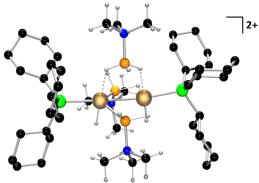Past research highlights
- The organometallic chemistry of rhodium and iridium complexes of Glorius’ conformationally rigid bioxazoline-derived NHC ligands. Examples include: the isolation of 14VE Rh(I) complexes (Organometallics 2014), the selective and reversible C–H bond activation of fluorobenzenes (Chem. Commun. 2015), and the isolation of complexes with unusually distorted NHC coordination geometries (Organometallics 2015). During the course of our work we also noted the ability of these carbenes to undergo C–F bond activation reactions (Org. Biomol. Chem. 2017).

- The development and mechanistic investigation of bench–stable rhodium(I) catalysts, containing the small–bite angle diphosphine ligands for the efficient intermolecular hydroacylation of a wide variety of un-activated alkenes and alkynes with β-S-substituted aldehydes (J. Am. Chem. Soc. 2012, Oxford with A. S. Weller and M. C. Willis).

-
The activation of C–C and C–H bonds using low coordinate rhodium phosphine complexes [Oxford, with A. S. Weller]. Examples include: the isolation of agostic intermediates in alkyl dehydrogenation (Chem. Commun. 2009), reversible C–C bond activation (J. Am. Chem. Soc. 2011), and C–C bond activation of biphenylene (Organometallics 2010).



-
Insights into the mechanism of rhodium catalyzed dehydrocoupling of amine–boranes [Oxford, with A. S. Weller]. In particular the characterisation of B–H activation products (Angew. Chem. Int. Ed. 2010) and amine–borane sigma complexes (Inorg. Chem. 2010).



-
The development and mechanism of robust (Inorg. Chem. 2008) and chemoselective (Organometallics 2007) ruthenium hydrogenation catalysts [EPFL, with P. J. Dyson].


